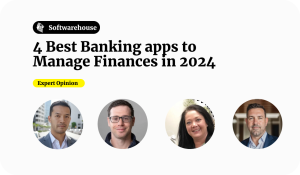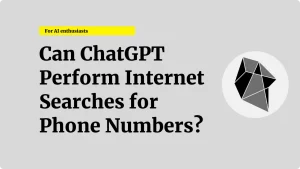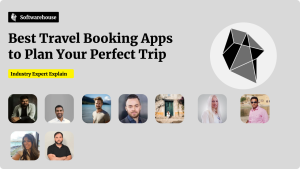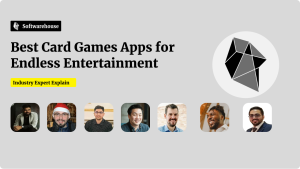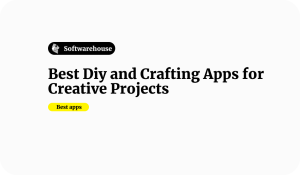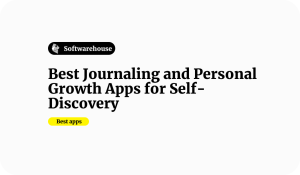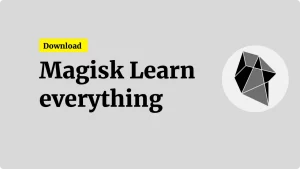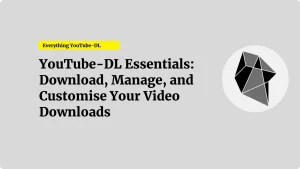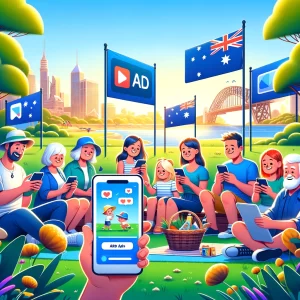In today’s digital age, mobile apps have become ubiquitous in our daily lives, transforming the way we communicate, shop, and entertain ourselves. For businesses and developers in Australia, understanding how mobile apps generate revenue is crucial to tapping into this lucrative market. In this blog, we’ll explore the various strategies employed by mobile apps to make money, focusing on the nuances of the Australian market.
1. In-App Advertising

Many apps are free to download today. You might wonder, “How do free mobile apps make money?” The answer lies in in-app advertising, a key revenue source for many free apps. This approach is quite popular, especially in Australia, as it aligns with global trends. Essentially, app developers find creative ways to include ads within their apps, making sure these ads don’t interrupt your experience. This method allows apps to make money without charging you a penny.
Types of Ads in Apps:
- Banner Ads: These are basic ads you see at the top or bottom of your screen. They’re a common way for apps to make money, being less intrusive so you can continue using the app without any issues.
- Video Ads: Often found in gaming and video apps, these ads can be entertaining. Some apps even pay you to watch these ads, offering in-app rewards, which is a popular concept among users looking for free ways to make money.
- Interactive Ads: These ads invite you to interact with them, potentially making the ad experience more enjoyable. It’s a clever strategy for mobile apps to make money while entertaining you.
Balancing Ads and User Experience:
To make money from free mobile apps without turning off users, developers need to balance ad frequency and ensure ads are relevant. Personalizing ads based on your interests and how you use the app can make ads seem more like a service and less like an interruption. Finding the right number of ads is crucial; too many can annoy users, but too few might not generate enough revenue. Placement is also key, ensuring ads don’t interfere with the app’s main functions.
Engaging Users in Australia:
For apps looking to engage users and make money in the Australian market, incorporating local culture and humor into ads can boost engagement. Australians appreciate having control over their ad experiences, such as the ability to skip ads or select the types of ads they see. This transparency and control can lead to a more positive experience, encouraging loyalty to the app.
2. In-App Purchases
In-app purchases (IAP) represent a strategic monetisation model where users are offered additional, often exclusive, features or content for a fee. This approach has transcended beyond its roots in gaming apps, becoming a staple in various genres including utility, productivity, and even lifestyle apps. In the Australian market, the success of in-app purchases hinges on their ability to offer tangible, real value to the user.

Diverse Range of In-App Purchases:
- Virtual Goods and Currency in Gaming Apps: Within the gaming sector, users can purchase items such as virtual currency, special equipment, or advanced levels. These purchases enhance the gaming experience and offer a competitive edge, which is particularly appealing to the Australian gaming community.
- Premium Features in Utility and Productivity Apps: Beyond gaming, apps in other categories like utility or productivity leverage IAP by offering advanced features. This could include additional storage in a cloud app, advanced editing tools in a photo app, or ad-free experiences in a music streaming service.
Creating Value for the User:
- Real Value Proposition: The key to successful in-app purchases, especially in a market as discerning as Australia’s, lies in the perceived value. The offerings should feel like a natural extension of the app that genuinely enhances the user experience.
- Transparent Pricing: Transparency in pricing and what the user gets for their money is crucial. Avoiding hidden costs and providing clear information on what the purchase entails can build trust and encourage more users to opt-in.
Tailoring to the Australian Audience:
- Localised Content: Offering content that resonates with local tastes and preferences can significantly boost the appeal of in-app purchases. For instance, a fitness app might offer workout plans tailored to popular outdoor activities in Australia.
- Flexible Payment Options: Catering to the preferred payment methods in Australia, such as credit/debit cards, PayPal, or local payment services, can remove barriers to purchase.
Balancing Free and Premium Offerings:
- Freemium Model: A popular approach is the freemium model, where the basic app is free, but users can pay for additional, premium features. This model works well as it allows users to experience the app and understand its value before deciding to invest in premium offerings.
- Trial Periods and Demos: Offering a free trial period for premium features can be an effective way to showcase the value of the in-app purchases. This allows users to experience the benefits firsthand before making a purchase decision.
In-app purchases, when executed thoughtfully, can transform a free app into a profitable venture without compromising user satisfaction. For the Australian market, aligning these purchases with user expectations of value, transparency, and local relevance is the cornerstone of success in this monetisation strategy.
3. Subscription Models

This model is particularly effective for apps that offer continually updated content or ongoing services, such as streaming media, productivity tools, or lifestyle apps. Additionally, in the Australian market, which has shown a robust appetite for subscription services, the success of apps like Spotify and Netflix underscores the potential of mobile apps to make money. The crux of thriving in this space is to offer content or functionality that not only attracts users but also convinces them of the value in a recurring investment.
Understanding the Appeal of Subscription Models:
- Consistent and Quality Content: The subscription model is hinged on the promise of delivering consistent, high-quality content or services. Whether it’s the latest streaming content, regular updates to productivity tools, or new features in a lifestyle app, the emphasis is on keeping the offering fresh and engaging.
- Predictable Revenue Stream: For developers and businesses, subscription models provide a predictable and stable revenue stream, a significant advantage over one-time purchases or ad-based models.
Aligning with Australian Market Preferences:
- Localised Content and Features: To resonate with the Australian audience, it’s essential to include local content, be it local TV shows and movies for streaming apps or region-specific features for productivity tools.
- Competitive Pricing Strategies: Pricing is a critical factor in the Australian market. Offering competitive pricing, possibly with different tiers to cater to varying user needs, can be a deciding factor for users. Consequently, it influences those considering a subscription.
Enhancing User Engagement:
- Free Trials and Introductory Offers: Providing free trials or attractive introductory offers can be a powerful strategy to get users on board. It allows potential subscribers to experience the full range of premium features before committing to a recurring payment.
- Seamless User Experience: The ease of use, including a simple sign-up process, easy cancellation, and user-friendly interface, plays a vital role in retaining subscribers.
Building a Sustainable Subscription Ecosystem:
- Regular Updates and Improvements: Continually improving the app with new features, content updates, and performance enhancements encourages ongoing user engagement and satisfaction.
- Transparent Communication: Maintaining transparency about subscription features, costs, and any changes is crucial for building trust and loyalty among users.
Focusing on Value Addition:
- Exclusive Content or Features: Offering exclusive or early access to content or features can justify the ongoing cost to the users.
- Personalization: Personalizing the user experience, such as recommending content based on user preferences or allowing customizable features in productivity tools, enhances the perceived value of the subscription.
4. Freemium Model
The freemium model is a combination of free and premium offerings. The basic app is free, but users can pay for advanced features or enhancements. This model is effective in the Australian market as it allows users to try the app before committing financially. Hence, it lowers the entry barrier.
5. Paid Apps
While less common, some apps require a one-time purchase. This model can be effective for highly specialised or niche apps, where the value is clear and the target market is willing to pay upfront. In Australia, apps that solve specific problems or offer unique functionalities tend to do well with this model.
6. Sponsorship and Partnerships
Sponsorship and partnerships involve collaborating with brands or companies. An app might feature branded content, exclusive offers, or joint marketing initiatives. This model works well in Australia, especially for apps with a strong
user base or a niche audience that aligns with the sponsor’s target market. The key is finding a partner whose brand values and customer base complement the app, creating a mutually beneficial relationship.
7. Affiliate Marketing
This involves promoting other products or services within the app and earning a commission for each sale or referral. For instance, a fitness app might include links to buy sports equipment from a retail partner. This method requires a strategic approach to ensure the promoted products are relevant and add value to the user’s experience.
8. Data Monetisation
While controversial, some apps monetise by collecting and selling anonymised user data. In Australia, where data privacy laws are stringent, this method requires transparency and adherence to legal standards. Apps must inform users about what data is collected and how it’s used, ensuring user trust is maintained.
9. Crowdfunding
For new apps or features, crowdfunding platforms like Kickstarter can be a way to generate funds. This is particularly effective for apps with a unique proposition or those that cater to a specific community. Australian users are often open to supporting innovative local projects, making this a viable option for certain apps.
10. E-Commerce Integration
Apps can also make money by integrating e-commerce functionalities, allowing users to purchase goods or services directly through the app. This model is particularly effective for retail or service-based apps in Australia. Here, there is a high level of comfort with online transactions.
Conclusion: Mobile Apps Make Money
The Australian app market offers diverse opportunities for monetisation. However, the strategy should align with the app’s purpose, user base, and the overall user experience. A successful monetisation strategy is user-centric, transparent, and adds value. Consequently, users remain engaged and willing to pay for the services or products offered.
Remember, no one-size-fits-all solution exists, and often, a combination of these strategies works best. The key is understanding your target audience, the competitive landscape, and the unique value your app provides. With the right approach, monetising a mobile app can be a highly profitable venture in Australia’s vibrant digital economy.








































